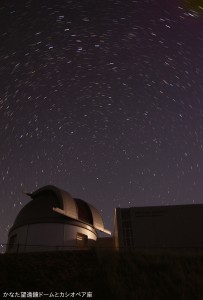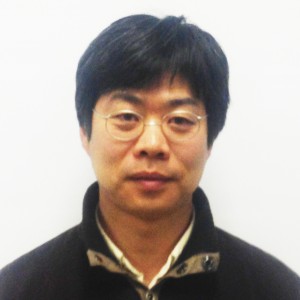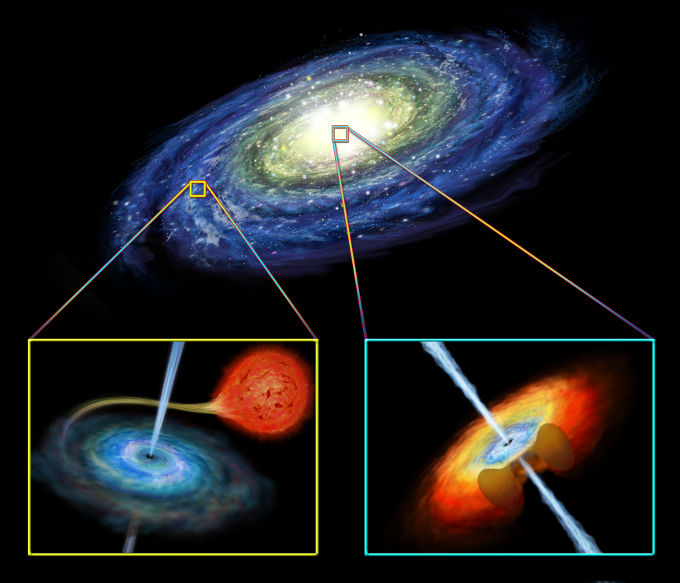 The optical-infrared astronomy group conducts observational research on active astronomical phenomena, in particular, so-called “transient objects” including supernova explosions, gamma-ray bursts, and active galactic nuclei and gravitational wave sources, using the Kanata 1.5-m optical-infrared telescope in collaboration with X-ray and gamma-ray astronomical satellites. We are also actively involved in research on galaxy formation and evolution, using other ground- and space-based telescopes. Here we present a brief summary of our research activities.
The optical-infrared astronomy group conducts observational research on active astronomical phenomena, in particular, so-called “transient objects” including supernova explosions, gamma-ray bursts, and active galactic nuclei and gravitational wave sources, using the Kanata 1.5-m optical-infrared telescope in collaboration with X-ray and gamma-ray astronomical satellites. We are also actively involved in research on galaxy formation and evolution, using other ground- and space-based telescopes. Here we present a brief summary of our research activities.
[Group Members] [Infrared Astrophysics Group Web Site]
What is transient objects?
Stars observed from the ground appear to be very quiet and stable. However, the real universe has a different face, that is dynamic and active, behind its apparently calm mask. For example, even our Sun, which seems to be shining quite stably, is also very active; it changes brightness continuously and repeated explosions occur on its surface, when we observe it in detail. There are many kinds of active (i.e., showing large brightness and color variations over short timescales) astronomical objects such as supernovae, cataclysmic variable stars, gamma-ray bursts, and active galactic nuclei in the universe. Those variable objects are called “transient objects”. Most such objects emit huge amounts of energy in short time periods. They are closely related to the birth, evolution and death of stars and galaxies. The gravitational wave source (merger of neutron star binary) that was first discovered on 2017 August 17 is one of the most attracctive transient object currently. Therefore, it is very important to reveal the mechanisms that give rise to the activity and emission of transient objects in order to answer fundamental questions such as “where did the various elements of our world came from”, “how and where was our Sun born”, or “what is the future fate of our Sun”. The optical-infrared astronomy group at CORE-U is conducting intensive studies on transient objects involving multi-wavelength observations centered on the optical-infrared region in order to understand the evolution of stars and galaxies.
Transient objects and the extreme universe
Phenomena related to high-energy activity in the Universe can be observed as transient objects. This includes vast explosions associated with the death of stars, energy releases and gas/dust ejecta from extremely high-density compact objects that are the remnants of dead stars, and relativistic jets from supermassive black holes in the center of galaxies. In other words, transient objects are phenomena that are so energetic that they cannot be reproduced or tested in any current ground-based experiments. Although these phenomena only last for a short time compared with the age of the universe, they heavily influence the formation and evolution of stars and galaxies in our Universe. Observational studies of transient objects and their effect on a larger scale provide important clues for understanding the physics of such an extreme Universe.
Group Members

Koji Kawabata (Professor)
Although the stars in the night sky seem to shine fairly constantly like the Sun, they undergo births and deaths and can show violent activity, particularly when dying. A supernova is one of the most energetic stellar explosions, in which the entire stellar atmosphere is blown away; it can temporally brighten to billions of times the luminosity of the Sun. In addition, some supernovae are accompanied by very high-energy gamma-ray bursts. Such events have contributed to the current state of the Universe. We are carrying out observations using the 1.5-m Kanata Telescope in Hiroshima University and other telescopes and observing facilities. We are also developing state-of-the art instruments and new telescopes, e.g., HinOTORI 50cm telescope at 5100m altitude above see level in Ali, Tibet for astronomical observations.

Makoto Uemura (Associate Professor)
Explosions are constantly occurring in the Universe. My research focuses on explosive events that occur during accretion processes involving strong, compact gravitational sources such as black holes. In such systems, the gas forms an “accretion disk” around the compact object. High-speed plasma flows, and so-called “jets” are also occasionally observed. However, we cannot directly observe the structure of such components because they are too far from us. Recently, I have been studying methods of reconstruction of such objects based on their temporal variations.

Hanae Inami (Assistant Professor)
Galaxies are collections of stars. It sounds simple, but in fact there are many different kinds of galaxies in this huge universe. The ones that I am interested in are difficult to find with the visible light that our eyes can see, but very bright with infrared light. As the name implies, infrared galaxies are bright in the infrared, because they host a lot of young stars hidden in the interstellar dust, which is heated by the stars and generates thermal infrared radiation. Interestingly, there are not many infrared galaxies in the recent universe, but we know that about 10 billion years ago the majority of stars were born in infrared galaxies. However, there are still many mysteries around them, such as what process caused them to generate so many stars. I have been enjoying trying to peer into the nature of these infrared-luminous star-forming galaxies using space-based infrared telescopes and the ALMA observatory.

Mahito Sasada (Assistant Professor)
Active galactic nuclei often have relativistic plasma flows, called as jets. The structure and generation mechanism of the jet are not known yet. I study the relativistic jets by analysing the optical and near-infrared data of photometry and polarimetry using the 1.5-m Kanata telescope in Higashi-Hiroshima Observatory and so on. Furthermore, I will conduct and develop a system of HinOTORI 50-cm telescope at Ali Observatory in Tibet to observe electro-magnetic counterparts of gravitational wave sources and transients.

